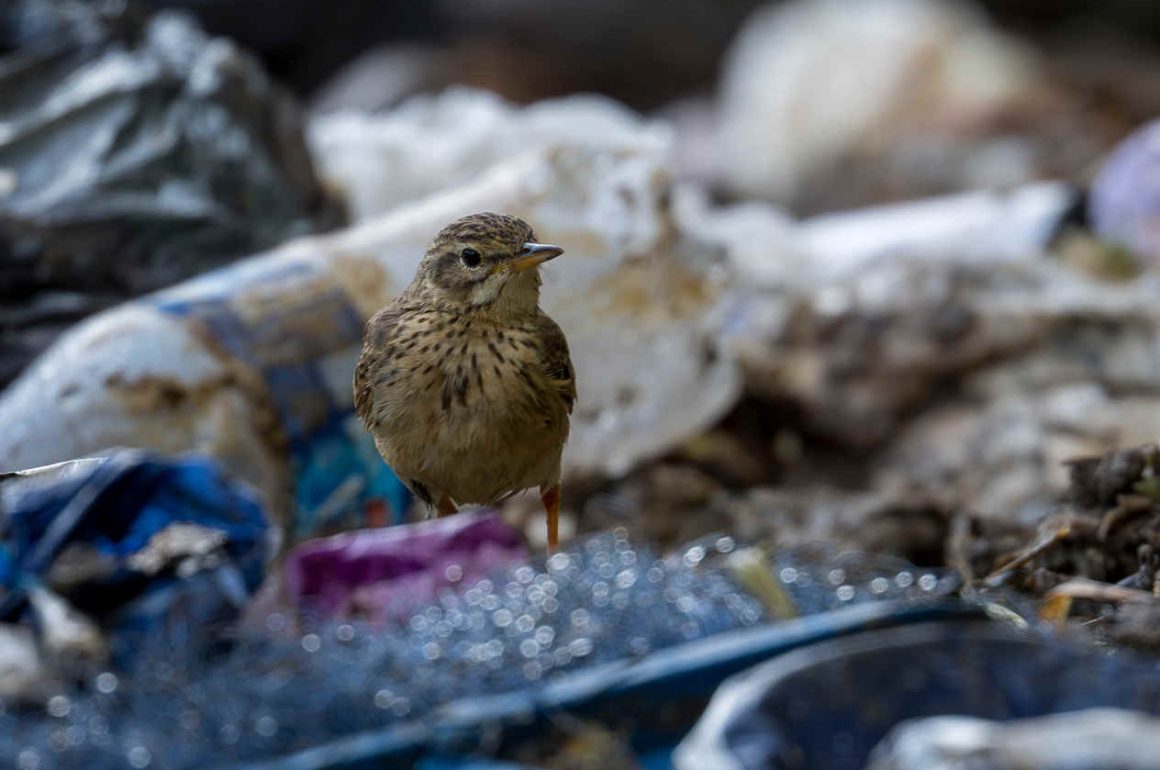
Collier County Landfill, Naples, Florida
Most people who spend the winter or visit beautiful Naples, Florida, on the Gulf of Mexico coast, enjoy the beaches, attractions, and restaurants. For me, it’s birding. In January 2023, I had an unexpected treat as my husband and I joined the local bird club for a special visit to the Collier County Landfill (i.e., the place where the garbage is buried). The landfill official had our cars line up behind his. He proceeded to give us a tour of the facility, explaining what they do at the landfill. Most of us were eager to get to the section with the recently added garbage.
The landfill managers try to limit the avian scavengers using exploding firecrackers and patrolling Peregrine Falcons. But they still come. We saw a juvenile Bald Eagle, a Wood Stork, and a Short-toed Hawk. There were a few Turkey and Black Vultures. The largest groups were 50 Boat-tailed Grackles, 170 Fish Crows, 200 Cattle Egrets, 200 White Ibis, and 100 Ring-billed Gulls.
We enjoyed talking to the falconer about her birds’ work. Down the road from the landfill, a new sports complex had been built with beautiful pools. Her birds’ job was to discourage the gulls from visiting either the “spa” or the “buffet”.
It was a fun day. This winter, I’ll have to contact the trip leader to arrange a return visit to the landfill. I’m eager to see what is new there (Leslie Kinrys).
Delhi Rubbish Tip
I’ve been lucky enough to have visited some of the world’s greatest sewage farms in my search for birds. I remember with particular affection the sewage farm at Port of Spain, Trinidad, with its White-headed Marsh Tyrants and Collared Plovers, while Alice Springs sewage farm was memorable for its Pink-eared Ducks and Red-necked Avocets. In South Africa, my visit to the Paarl Bird Sanctuary (part of Paarl’s wastewater treatment works) produced great views of hundreds of White-winged Black Terns as well as Greater Flamingoes and a variety of waterfowl.
However, perhaps the most notable and certainly the most smelly waste site that I’ve ever visited was the mountainous Delhi tip. Understandably, visits by tourists to this notoriously ugly site are not encouraged by the Indian authorities, but I was travelling with bird photographer David Tipling, and he wanted to visit the tip to take photographs for a book he was illustrating.
Most of the local people we met at the site were friendly, but they were somewhat surprised to find two Englishmen with big cameras taking so much interest in the place, while at one stage, we were actively discouraged from going any closer. As for the birds, well, there was one dominant species: the Black Kite. There were hundreds and hundreds of them, scavenging the mountains of rubbish. Unmolested by the local people, they were tame and easy to approach. There were other birds, too, ranging from Egyptian Vultures and the inevitable Cattle Egrets to Citrine Wagtails. Would I go again? The emphatic answer is no: it was one of the most horrible places I’ve ever had the misfortune to visit (David Tomlinson).
Black Kite with cattle egrets on Delhi tip
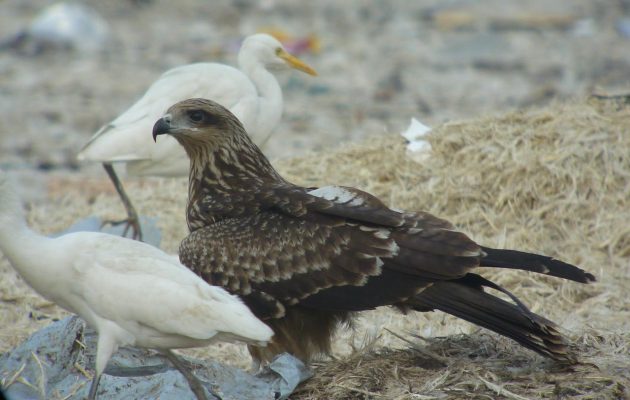
Guwahati Garbage Dump
In December 2019 and January 2020, concerns about the novel coronavirus were making headlines. In those very early days, I listened with only one ear. I had a three-week trip to northern India planned and a lot of work to get through in preparation.
I don’t remember the date, but my trip departure came sometime around the middle of February 2020. Not thinking anything of it, I boarded my departure flight. I was a little surprised to see an elderly Indian couple wearing masks and huddled together in their seats. I landed at the Indira Gandhi International Airport, was picked up, and, with absolutely no talk of the coronavirus, I set off with a private tour to visit Old Delhi, the fabulous Taj Mahal, Ranthambore NP, and Gir NP. Enough good cannot be said about these places, but none of them has anything to do with a garbage dump.
Kaziranga National Park, in the state of Assam, was the final leg of our trip. From Delhi, we boarded an Air India flight to Guwahati. We flew in clear skies over the Himalayas and I took a photo from the window …

Guwahati is the largest metropolis in India’s northeastern region. We arrived, collected our luggage, and, dragging it along behind us, we were almost immediately intercepted by young women with clipboards and thermometers. They requested that we complete documentation of where we had traveled and wanted to check our temperatures. They questioned if we had been to China and, upon hearing this question, our American trip organizer, who could be a bullying man especially when confronted with delays or barriers to his goal, in this case, boarding the van for our first birding stop, blew past the young women saying, “this has nothing to do with us” and marched forward, leaving the young women bewildered and stricken. I was embarrassed. Clearly, their mission and efforts had everything to do with us and all of the travel we had done: busy tourist locations, train stations, and multiple visits to Delhi airport. Never mind all that.
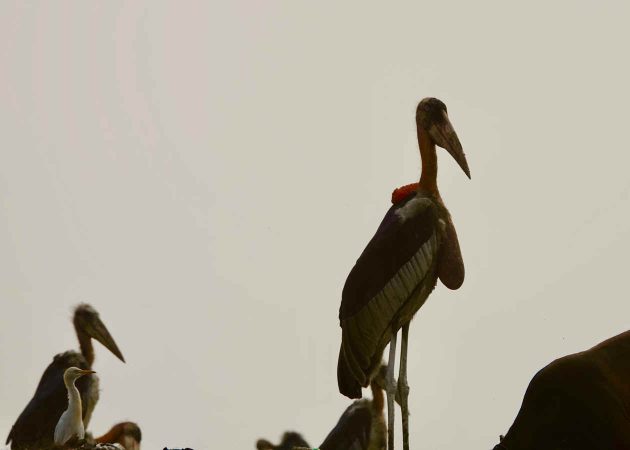
Our first birding stop in Assam was to see the Greater Adjutant, India’s rarest stork. We were on our way to the Guwahati garbage dump. We arrived, and our van drove on the same access road that the dump trucks used. The stench was overwhelming, the poverty was gripping. Women were standing in abject filth and, using a hand tool, were bent over raking the garbage, looking for anything worthwhile. Cows were scavenging for anything edible. The garbage was the color black and heaped in a gigantic mountain. Along the access road, there were raggedy kiosks selling food, snacks, and other items of use to the workers. Did we see the Greater Adjutant? We did indeed. Remembering back to this moment to write this makes me recall a powerful array of feelings. I returned home and back to work, and three days later, the world shut down. Suddenly, I had no more thoughts of India, a place I loved and was thrilled to be able to visit.

My memories were re-ignited when, on March 30, 2021, I read in the New York Times their The World Through a Lens profile: A Biologist, an Outlandish Stork and the Army of Women Trying to Save It, photographs and text by Carla Rhodes. My heart skipped a beat and made me glad. Cliche? No, truth. I was so happy to have my Guwahati garbage dump memories gifted back to me.
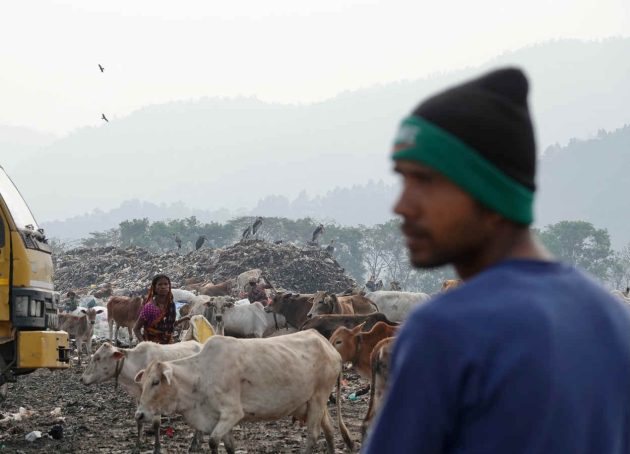
There is also a 16-minute YouTube video titled Meet the Army of Women Saving India’s Rarest Stork that I highly recommend. It aired on the PBS show Nature in 2024 (Catherine Carroll).
Macchu Picchu, Peru
Sewage treatment and birds are a match made in heaven. Some wastewater treatment plants have even become famous birding locations, like Strandfontein in Cape Town. Landfills or solid waste disposal sites are less popular, because while the rats will attract raptors, the main species will be crows and gulls. I am fully expecting my fellow beat writers to write pleasing reviews of unpleasant places. Taking a contrarian position, I will write about a truly bad place for birding: Machu Picchu. This site does not smell at all, but it is worse than a sewage farm or a landfill. It’s infinitely better to stand in the stink of sewage than to watch this world wonder. Coming from Cusco, you arrive at the station, and you are whisked away in a bus up the mountain to the ruins. You walk around, hoping for an Andean Condor, while the guide drones on about how clever these hundreds of astronomers were to figure out the position of the sun at a given date (yawn). I did see some birders ignoring the ubiquitous history and happily strolling around promising biotope while I shuffled past the “sights” in my wife’s slipstream. All I saw: Andean Gull, Andean Swift, Black-chested Buzzard-eagle, Cinereous Conebill, Dusky-green Oropendola, Torrent Duck, Torrent Tyrannulet, and White-bellied Hummingbird. Oh, and I got the evil eye from the missus for looking “the wrong way” all the time (Peter Penning).
Trash Dump, Nuwara Eliya, Sri Lanka
As far as trash dumps go, the one at Nuwara Eliya is not particularly big or disgusting (except for the monkeys, of course). But kudos to our guide for taking us here on a birding trip. Quite a few bird photographers I know try to avoid taking photos at such locations, or even photos with any indication of human life or technology – I find that attitude strange.
And isn’t there a weird beauty in a photo showing both trash and a Paddyfield Pipit …
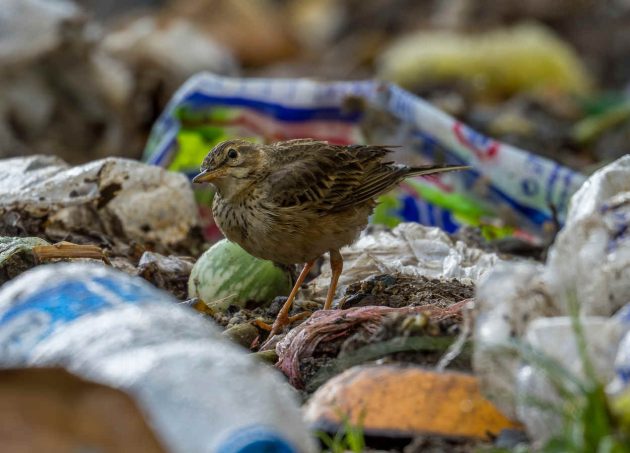
… or trash and a Common Myna …
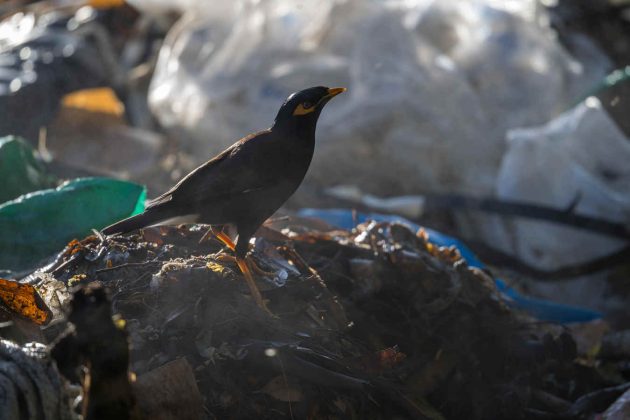
… or trash and a Common Tailorbird?
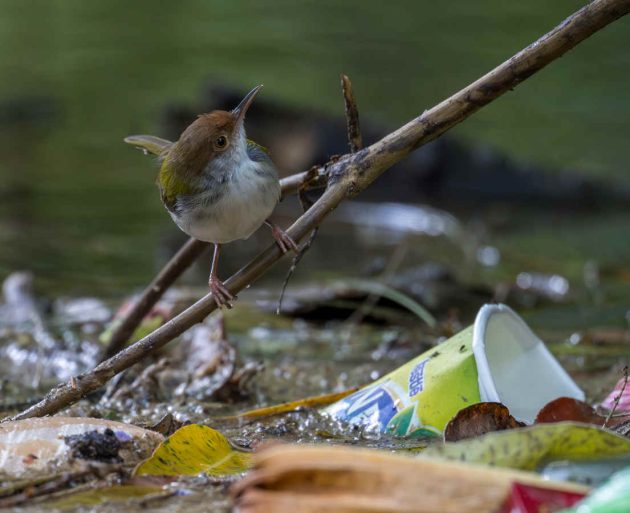
The combination of trash and mammal will always be ugly, though. Particularly if the mammals are ugly (Kai Pflug).
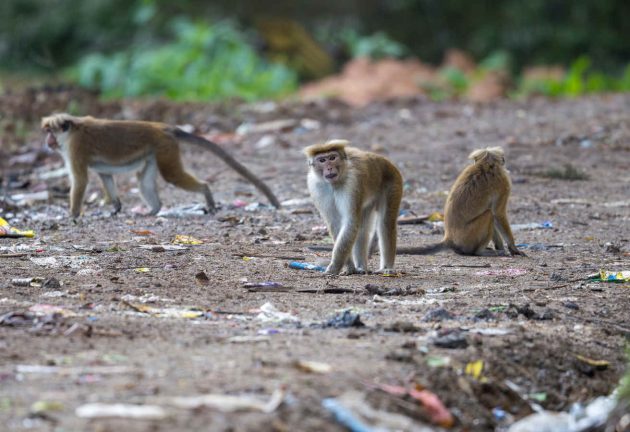
Brownsville Dump in Brownsville, Texas
Unintended birding sites are fascinating. Birding at landfills is definitely an unintended use. But hey – we follow the birds, right? I haven’t done a lot of landfill birding, except for probably one of the more famous sites in the US: the Brownsville Dump in Brownsville, Texas. Birders regularly visit this landfill in hopes of seeing Tamaulipas Crows, which venture over the border every few years. I visited in 2017 when the crows were being seen during the Rio Grande Valley Birding Festival. We stopped by the office to gain access, and it was amazing how excited the workers were to see us and welcome us. We easily drove up to the current dumping area and found it! There was a whole crowd holding their nose and enjoying the sighting (Hannah Buschert).






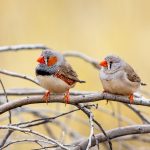
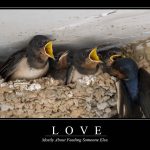

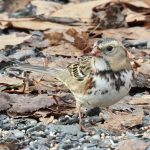
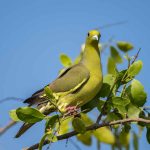

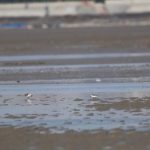
This post answers the question: “Can Birds Smell?”
EXCELLENT.